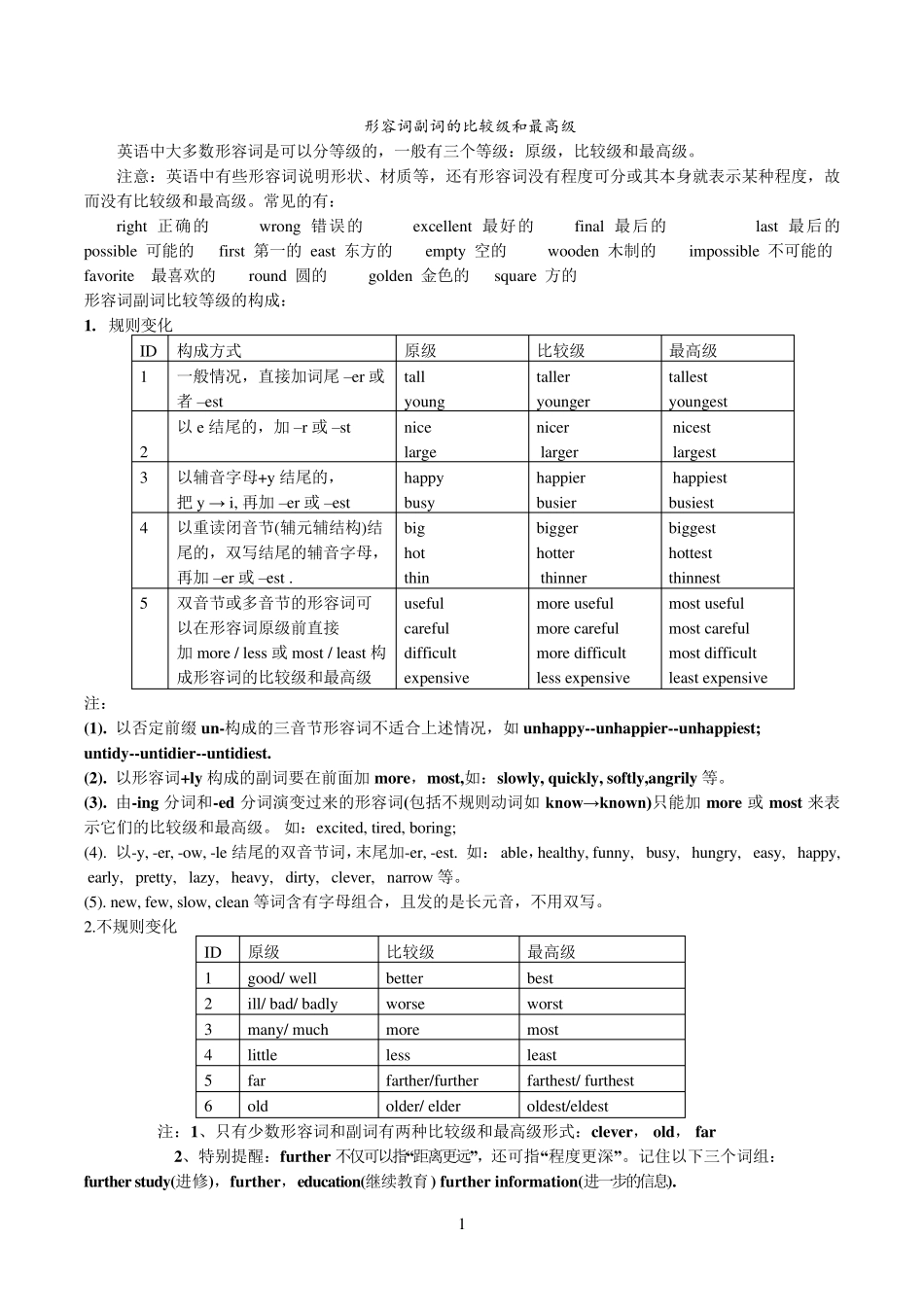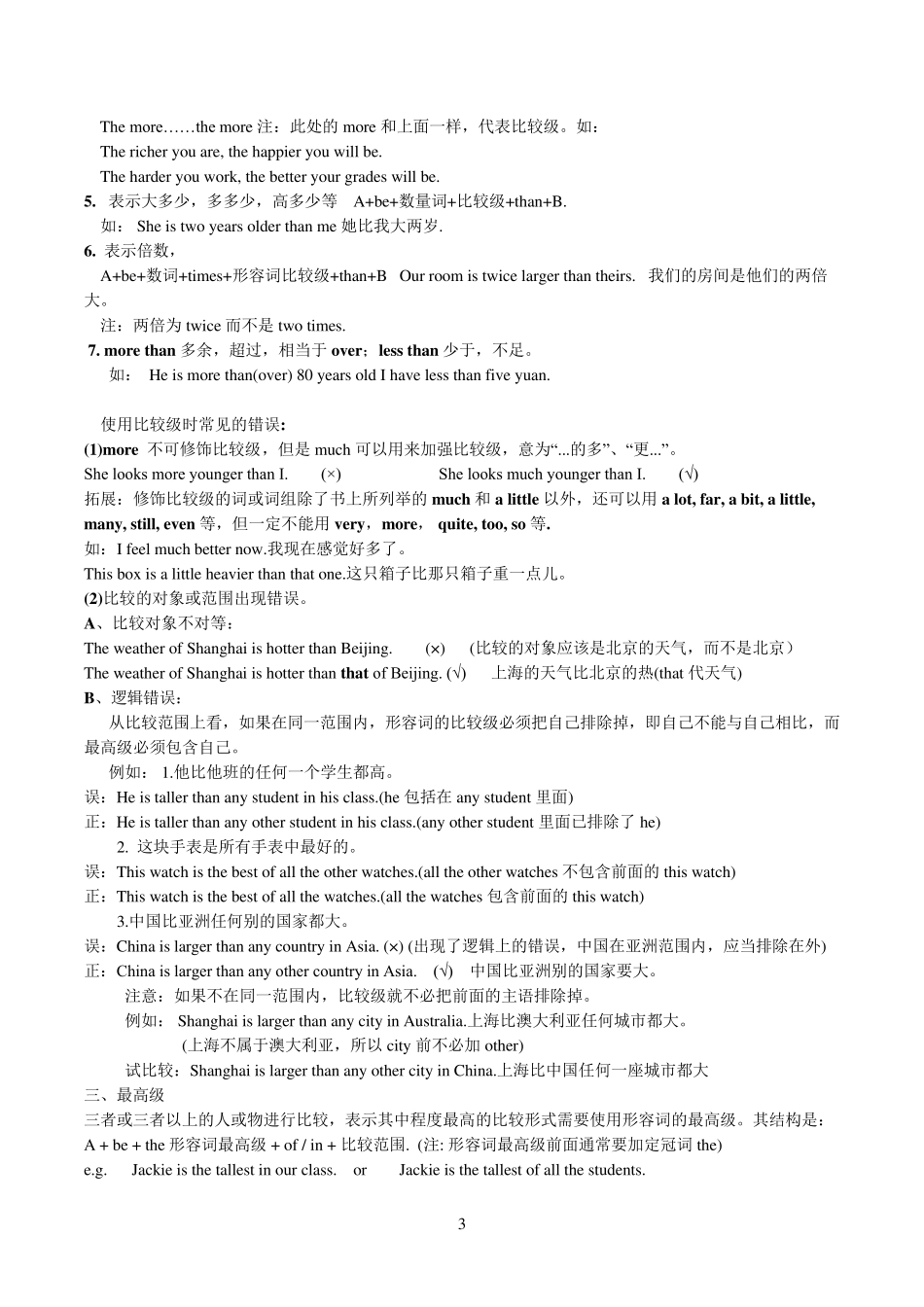1 形容词副词的比较级和最高级 英语中大多数形容词是可以分等级的,一般有三个等级:原级,比较级和最高级。 注意:英语中有些形容词说明形状、材质等,还有形容词没有程度可分或其本身就表示某种程度,故而没有比较级和最高级。常见的有: right 正确的 wrong 错误的 excellent 最好的 final 最后的 last 最后的 possible 可能的 first 第一的 east 东方的 empty 空的 wooden 木制的 impossible 不可能的 favorite 最喜欢的 round 圆的 golden 金色的 square 方的 形容词副词比较等级的构成: 1. 规则变化 ID 构成方式 原级 比较级 最高级 1 一般情况,直接加词尾 –er 或者 –est tall young taller younger tallest youngest 2 以 e 结尾的,加 –r 或 –st nice large nicer larger nicest largest 3 以辅音字母+y 结尾的,把 y → i, 再加 –er 或 –est happy busy happier busier happiest busiest 4 以重读闭音节(辅元辅结构)结尾的,双写结尾的辅音字母,再加 –er 或 –est . big hot thin bigger hotter thinner biggest hottest thinnest 5 双音节或多音节的形容词可以在形容词原级前直接加 more / less 或 most / least 构成形容词的比较级和最高级 useful careful difficult expensive more useful more careful more difficult less expensive most useful most careful most difficult least expensive 注: (1). 以否定前缀 un-构成的三音节形容词不适合上述情况,如 unhappy--unhappier--unhappiest; untidy--untidier--untidiest. (2). 以形容词+ly构成的副词要在前面加 more,most,如:slowly, quickly, softly,angrily等。 (3). 由-ing 分词和-ed 分词演变过来的形容词(包括不规则动词如 know→known)只能加 more 或 most 来表示它们的比较级和最高级。 如:excited, tired, boring; (4). 以-y, -er, -ow, -le 结尾的双音节词,末尾加-er, -est. 如: able,healthy, funny, busy, hungry, easy, happy, early, pretty, lazy, heavy, dirty, clever, narrow 等。 (5). new, few, slow, clean 等词含有字母组合,且发的是长元音,不用双写。 2.不规则变化 ID 原级 比较级 最高级 1 good/ well better best 2 ill/ bad/ ba...


